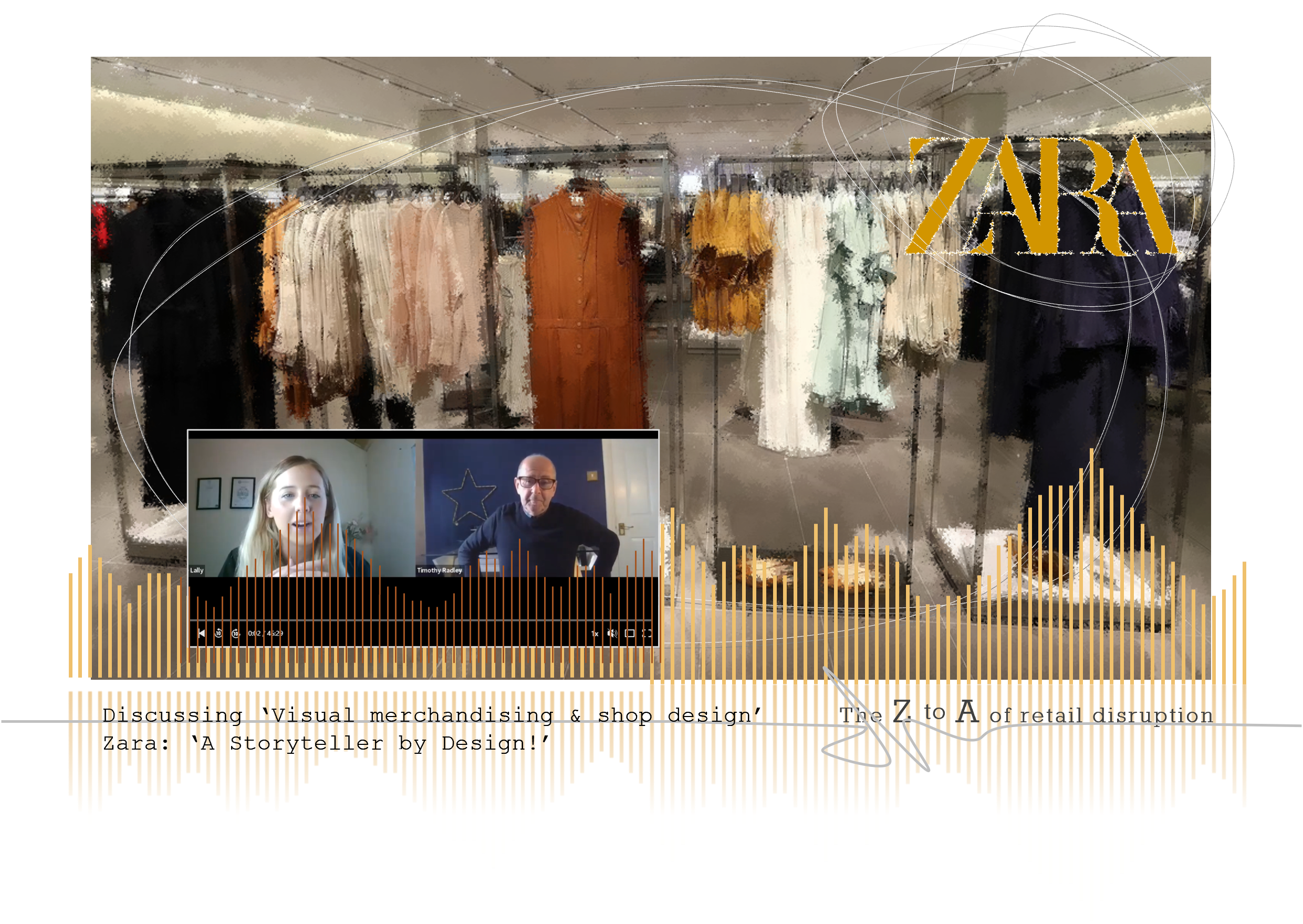Listen to myself, Tim Radley, on the Louise Lally podcast, discussing the future of visual merchandising, and the changing world of physical shop spaces for both large brands and small independent retailing.
Join the free podcast now through this link…Retailing with Meaning Ep2 ”Shop Merchandising and Display” (podbean.com)
The podcast features a discussion on Zara. For me their name represents so much more than fast-fashion. They are restless innovators, from their obsessive customer focus and product design to the way they have evolved their visual merchandising and shop concepts to give the highest perception possible of dynamic fashion.
On the assortment side of things, they have learned quickly that even the fastest replenishment times possible still need to be supplemented with assortment flexibility and endless re-working. In the podcast we talk about the 4 different stories for fashion, categories, themes, hero products and silhouettes. Zara are expert at balancing these fundamental building blocks.
We also discuss how ecommerce, particularly mobile, has shifted collection building from large stories of many products, to less products with many stories each. The single screen has meant a new focus on individual lines, but individual lines with many display possibilities. Study any Zara shop, and you will see how over time products move, and mix with a variety of other products, to tell strong stories about categories, intimate silhouettes, express vibrant seasonal trends and beautifully simple statements. Not by accident, but by design and assortment construction.
A curious result of this way of working is how the number of mannequins in any Zara shop has reduced dramatically. It seems counter intuitive, but Zara’s dynamics are driven by the display of the assortment itself, and not by the more static statements that mannequins represent. What could be more cost-effective, more fluid, and more natural, than creating endless excitement from creative costume building.
So, take a listen to the podcast, discover Zara possibly in a new light, and understand why they are always important pioneers in the dynamic world of visual storytelling.
I’ll also explain and illustrate with best practice examples, the important areas that all retailers should consider when planning their shops, from the floor layout and space allocation, materials & lighting, to the grouping of product stories and visual merchandising displays.
Topics in the interview include:
- ‘Who were the mercurial brand that invented Visual Merchandising?’
- ‘How should we use colour as part of visual merchandising?’
- ‘Understanding the importance of lighting in shop design & display!’
- ‘The 4 different types of product stories we can display!’
- ‘How ecommerce has revolutionised the stories behind products!’
- ‘Is there less creativity in retailers, or is it simply focused on new and different disciplines?’
- ‘How is shop layout changing in today’s shops?’
- ‘Is space management still so critical? Do we need to put as many products in our shops?’
- ‘What KPIs do all shops need to measure to see if VM is working for sales?’
- How to prove visual merchandising works?
This is the second of 4 exclusive interviews Tim is giving during October. Other interviews cover:
- ‘Experiential Retailing’ & Shop concepts
- The new world for Retail people
- Sustainability & ethical retailing
